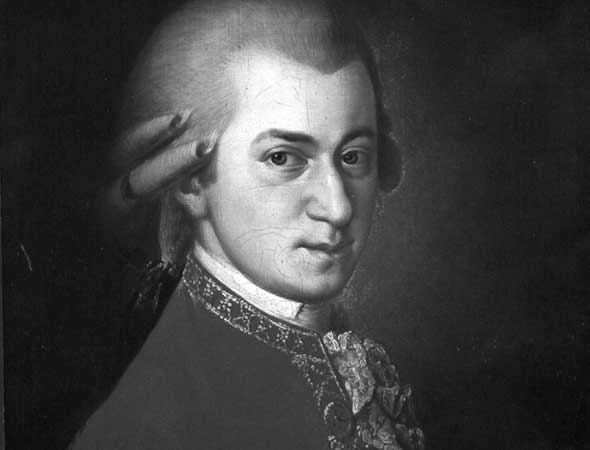MOZART – Symphony No. 39 in E-flat Major, K. 543

Wolfgang Amadeus Mozart
- Adagio – Allegro
- Andante con moto
- Menuetto: Allegretto
- Allegro
One of the difficulties in writing about Mozart is trying (in vain) to limit the word “great.” His symphonies from 26 to 41 are sometimes called his great symphonies, but of these, the final three have been accorded a special degree of greatness. (The great-great?) And one of these, No. 40, is known as the Great G Minor to distinguish it from No. 25, dubbed the Little G Minor. But does that mean that No. 25 is not great? Not really.
Helpfully, his No. 39 is in E-flat major, a key that Mozart specialists call bright and auspicious, though they wonder aloud why it is the least performed of the great-great final three. “[That] in itself is something of a puzzle,” insists the distinguished writer Phillip Huscher, “for it is no less a masterwork.” In fact, he notes, it is also the least studied of the three.
Musicologists love to speculate on how Mozart’s career might have progressed if he had lived beyond age 35, since his mastery and musical daring were only accelerating; his Symphonies No. 40 and 41 are full of astonishments. But the No. 39 is more modern in its refinements than its surprises. Its opening adagio is a model of restraint, adhering to strict sonata allegro form and opening onto an allegro that recalls the unfinished cadence we heard in the introduction (an effect that Charles Rosen calls “cinematic”—hardly an 18th-century adjective). The second movement, an andante, also adheres to convention, though it is remarkable for its combination of elegance and intense expressiveness.
The third movement, marked “menuetto,” is built around one of Mozart’s most admired minuets, and includes one of his beloved country dances. Finally, in the fourth movement, Mozart gives us a zesty moto perpetuo (“perpetual motion”) in which the second theme, fascinatingly, is actually the first theme in disguise. This may be the symphony’s most daring touch by a composer who, after all, was never at a loss for a melody.











